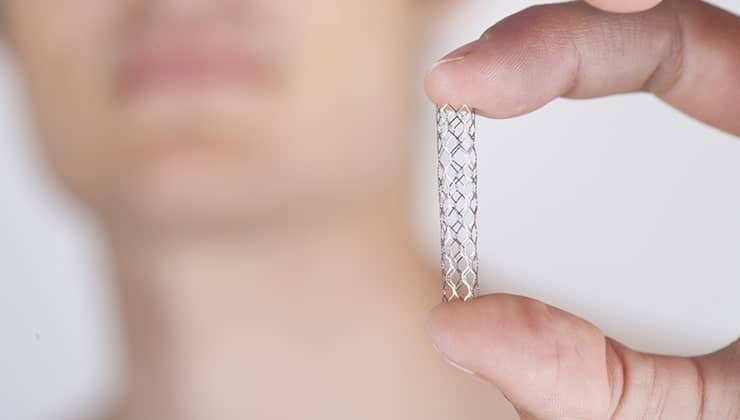What Is A Stent?
Heart disease is a major cause of death globally. Among its various treatment options, stent placement has emerged as a significant solution for managing coronary artery disease.
A stent is like a tiny tube made of metal or plastic. It is used to open arteries blocked due to plaque buildup or atherosclerosis. Generally, cardiologists use stents to widen the artery and improve blood flow to the heart after an angioplasty. This helps relieve symptoms and lowers the risk of having a heart attack.
Why Is A Stent Used?
The primary objective of placing a stent in your heart is to improve blood flow by opening up arteries that have become narrow or blocked. This is often needed for people with coronary artery disease (CAD), a condition caused by the accumulation of fatty deposits in the arteries. CAD blocks blood flow through these arteries, causing chest pain and shortness of breath.
Placing a stent helps reduce these symptoms and can also be performed during a heart attack to restore blood flow quickly. Once the stent has been placed, it will be coated with a layer of tissues over time.
Types Of Stents
There are two main types of stents used in cardiac procedures:
Bare Metal Stents (BMS): These stents are made of metal such as nickel-titanium or stainless steel and placed after angioplasty to keep the artery open.
Drug-Eluting Stents (DES): These stents are also made from metal, but they are coated with medications to prevent the recurrence of plaque buildup. The medicated stent works by slowly releasing the medicine, promoting healing, and reducing inflammation within the artery.
Procedure Of Stent Placement
At Heart360 care Hospital in Chennai, our skilled cardiologists and nurses carry out the stent placement procedure in a catheterization laboratory (cath lab). Here are the main steps of the procedure:
- Preparation: The patient is given sedatives to help them relax and is positioned, usually lying flat on their back on the procedure table. After that, local anasthesia will be administered.
- Catheter Insertion: Through a small incision in the wrist or groin, a thin catheter is inserted into the artery. This catheter is guided by fluoroscopy (real-time X-ray imaging) to reach the coronary arteries near the heart.
- Angiography: During angiography, the doctor injects a special dye through the catheter into the arteries. This dye helps the doctor see the arteries on X-ray images, allowing the doctor to spot any blockages or narrowings in the arteries.
- Angioplasty and Stent Placement: A small balloon-tipped tube is inserted into the blocked area. The balloon is then inflated, squashing the plaque against the artery walls. This opens up the artery, leading to better blood flow. After that, the stent is placed to keep the artery open.
- Post-Procedure Care: After the stent is placed, the catheter is removed. Then, some pressure is applied to prevent bleeding at the incision site. Later, the incisions are closed, and the patient is monitored for complications, such as bleeding or allergic reactions to the contrast dye.
What Are The Benefits Of Using A Stent?
Stent placement has several significant benefits for patients with coronary artery disease. Some of them are:
- Stent placement helps to open narrowed or blocked arteries, improving blood flow to the heart.
- Stents can reduce symptoms like chest pain (angina), allowing individuals to do daily activities with less discomfort and limitations.
- Stents decrease the chances of a heart attack as a heart attack.
- Stent placement is a minimally invasive procedure compared to traditional open-heart surgery. So, the recovery time is shorter, and patients experience less discomfort.
The use of a stent helps manage coronary artery disease. It helps relieve symptoms and lowers the chance of having a heart attack, which is a serious complication of the disease.
However, if a person needs more than two stents, opting for bypass surgery might be beneficial because it can address multiple blockages.
If you are told you need more than two stents, then we recommend a bypass surgery as you might benefit more from it.
Our Chief Cardiologist, Dr.Nikhil
Risks And Complications
While stent placement is generally safe and effective, like any medical procedure, it carries certain risks that are:
- Bleeding or Hematoma at the Insertion Site
- Allergic Reactions to Medications or Contrast Dye
- Infection
- Blood Clots
- Restenosis (Re-narrowing of the Artery)
- Stent Thrombosis (Rare but Serious Complication)


